-
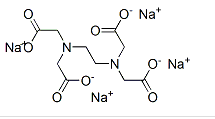
2-(2-Aminoethylamino)ethanol CAS:111-41-1
Sodium edetate CAS 64-02-08
Ethylenediaminetetraacetic acid (EDTA) contains 4 carboxyl groups and can generally form disalt, trisalt and tetrasalt. Common EDTA salts include disodium ethylenediaminetetraacetate (EDTA-2Na), tetrasodium ethylenediaminetetraacetate (EDTA-4Na), dipotassium ethylenediaminetetraacetate (EDTA-2K) and trisodium ethylenediaminetetraacetate. Potassium (EDTA-3K). Tetrasodium ethylenediaminetetraacetate (EDTA-4Na) is a multifunctional organic small molecule containing amino and carboxyl groups. It is widely used in analytical chemistry as a complexing agent.
Tetrasodium EDTA is an important complexing agent and metal masking agent. It can be used in dyeing in the textile industry, water quality treatment, color photosensitivity, medicine, daily chemicals, papermaking and other industries, as an additive, activator, water purifier, metal ion masking agent and activator in the styrene-butadiene rubber industry. In the dry process acrylic industry, it can offset metal interference and improve the color and brightness of dyed fabrics. It can also be used in liquid detergents to improve washing quality and enhance washing effect. -

Sodium edetate CAS64-02-08
Sodium edetate CAS 64-02-08
Ethylenediaminetetraacetic acid (EDTA) contains 4 carboxyl groups and can generally form disalt, trisalt and tetrasalt. Common EDTA salts include disodium ethylenediaminetetraacetate (EDTA-2Na), tetrasodium ethylenediaminetetraacetate (EDTA-4Na), dipotassium ethylenediaminetetraacetate (EDTA-2K) and trisodium ethylenediaminetetraacetate. Potassium (EDTA-3K). Tetrasodium ethylenediaminetetraacetate (EDTA-4Na) is a multifunctional organic small molecule containing amino and carboxyl groups. It is widely used in analytical chemistry as a complexing agent.
Tetrasodium EDTA is an important complexing agent and metal masking agent. It can be used in dyeing in the textile industry, water quality treatment, color photosensitivity, medicine, daily chemicals, papermaking and other industries, as an additive, activator, water purifier, metal ion masking agent and activator in the styrene-butadiene rubber industry. In the dry process acrylic industry, it can offset metal interference and improve the color and brightness of dyed fabrics. It can also be used in liquid detergents to improve washing quality and enhance washing effect. -
![[Copy] Disodium edetate dihydrate CAS6381-92-6](https://cdn.globalso.com/mit-ivy/26-275x300.png)
[Copy] Disodium edetate dihydrate CAS6381-92-6
Disodium edetate dihydrate CAS 6381-92-6。
Its appearance is white crystalline powder. Dissolved in water. Hardly soluble in alcohol。Soluble in water, slightly soluble in alcohol.
It used as complexing agent, also used in pharmaceuticals, color development and smelting of rare metals, etc.It also has antioxidant effects and has a strong chelating effect on metal ions and serves as a stabilizer.
Among the salts of ethylenediaminetetraacetic acid, the disodium salt is the most important. It is an important complexing agent used to complex metal ions and separate metals. It can also be used in detergents, liquid soaps, shampoos, and agricultural chemical sprays. Agents, color photosensitive material processing bleaching fixatives, water purifiers, pH regulators, coagulants, etc. In the redox initiator system for styrene-butadiene rubber polymerization, disodium EDTA, as a component of the active agent, is mainly used to complex ferrous ions and control the polymerization reaction speed. -
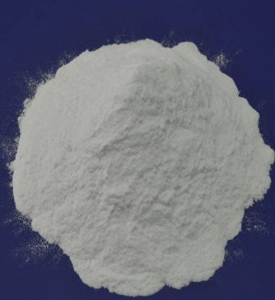
Disodium edetate dihydrate CAS6381-92-6
Disodium edetate dihydrate CAS 6381-92-6。
Its appearance is white crystalline powder. Dissolved in water. Hardly soluble in alcohol。Soluble in water, slightly soluble in alcohol.
It used as complexing agent, also used in pharmaceuticals, color development and smelting of rare metals, etc.It also has antioxidant effects and has a strong chelating effect on metal ions and serves as a stabilizer.
Among the salts of ethylenediaminetetraacetic acid, the disodium salt is the most important. It is an important complexing agent used to complex metal ions and separate metals. It can also be used in detergents, liquid soaps, shampoos, and agricultural chemical sprays. Agents, color photosensitive material processing bleaching fixatives, water purifiers, pH regulators, coagulants, etc. In the redox initiator system for styrene-butadiene rubber polymerization, disodium EDTA, as a component of the active agent, is mainly used to complex ferrous ions and control the polymerization reaction speed. -
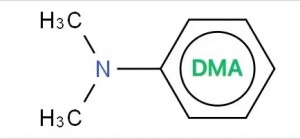
N,N-Dimethylaniline CAS: 121-69-7
N,N-Dimethylaniline CAS: 121-69-7
It is a liquid light yellow to light brown oil. There is a pungent odor. Soluble in ethanol, chloroform, ether and aromatic organic solvents, slightly soluble in water.
This product is an important dye intermediate. It can be used to prepare basic bright yellow, basic purple 5BN, basic magenta green, basic lake blue BB, basic brilliant blue R, cationic red 2BL, brilliant red 5GN, purple 3BL, brilliant blue, etc. In the pharmaceutical industry, this product Chemicalbook can be used to manufacture cephalosporin V, sulfa-b-methoprim, sulfa-dimethoprim, flucytosine, etc. It can be used to produce vanillin in the spice industry. It can also be used as a raw material for solvents, rubber vulcanization accelerators, explosives and certain organic intermediates.
-
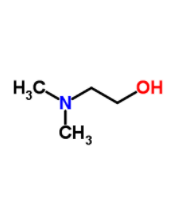
N,N-dimethylethanolamine CAS: 108-01-0
N,N-dimethylethanolamine CAS: 108-01-0
It is a colorless liquid with a pungent odor. Odor threshold: 0.25 ppm. Molecularweight 5 89.16; Boiling point =133℃; Freezing/Meltingpoint=259℃; Flash point =41℃ (oc); Autoignitiontemperature 5=295℃. Explosive limits: LEL 5=1.6%;UEL 5=11.9%. Hazard Identification (based on NFPA-704M Rating System): Health 2, Flammability 2, Reactivity 0.Soluble in water.
It is also known as dimethylaminoethanol. Studies indicate skin-firming properties, and an ability to reduce the appearance of fine lines and wrinkles as well as dark circles under the eyes. It is considered anti-aging, and antiinflammatory, and has exhibited free-radical scavenging activity. Also used as corrosion inhibitor, anti-scaling agent, paint additive, coating additive and solids separation agent. It is also used as an intermediate for active pharmaceutical ingredients and dyes. It serves as a curing agent for polyurethanes and epoxy resins. Further, it is used as an additive to boiler water. In addition to this, it is used therapeutically as a CNS stimulant.
-
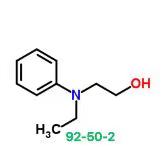
N-Ethyl-N-hydroxyethylaniline CAS: 92-50-2
N-Ethyl-N-hydroxyethylaniline CAS: 92-50-2
It Is an organic compound. It is an amide derivative between an ethyl compound and aniline.
Appearance: N-ethyl-N-hydroxyethylaniline is a colorless to slightly yellow oily liquid.
- Solubility: It is soluble in many organic solvents, such as alcohol and ether, and slightly soluble in water.
- Stability: Relatively stable at room temperature, but contact with strong oxidants should be avoided.
use:
- Chemical reagents: N-ethyl-N-hydroxyethylaniline can be used as a reagent in organic synthesis.
- Fiber dyes: It can be used as a component of dyes and is widely used in the textile and printing industries. -
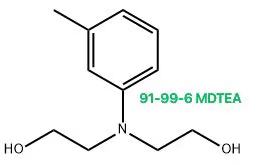
m-Tolyldiethanolamine CAS: 91-99-6
m-Tolyldiethanolamine,also known as DEET (diethylamide N,N-dimethyl-3-hydramide), is a common insect repellent. It is soluble in organic solvents such as ester, alcohol, and ether, and slightly soluble in water. This compound has good heat resistance and light resistance.
m-Tolyldiethanolamine is mainly used as an insect repellent to prevent bites and harassment from mosquitoes, ticks, fleas, grasshoppers and other insects. Its efficacy lasts for a long time and has a high repellent effect on mosquitoes and other insects. It is widely used in outdoor activities, wilderness exploration and military protection and other fields.
There are many methods for preparing N,N-bishydroxyethyl m-toluidine. One of the commonly used methods is to react m-toluidine and formamide in the presence of an alkaline catalyst. Specific steps are as follows:
1. React formamide with m-toluidine under alkaline conditions to generate N-formyl m-toluidine.
2. Heat the reaction product under acidic conditions to convert N-formyl m-toluidine into N,N-bishydroxyethyl m-toluidine. -

Triethylene glycol CAS: 112-27-6
Triethylene glycol CAS: 112-27-6
It is a colorless, odorless, hygroscopic, viscous liquid. Miscible with water and ethanol, slightly soluble in diethyl ether, almost insoluble in petroleum ether.
Used as an excellent dehydrating agent for natural gas, oil field associated gas and carbon dioxide; used as a solvent for nitrocellulose, rubber, resin, grease, paint, pesticides, etc.; air disinfectant; polyvinyl chloride, polyvinyl acetate resin, glass fiber and triethylene glycol lipid plasticizers for asbestos pressed boards; tobacco anti-drying agents, fiber lubricants and natural gas desiccants; also used in organic synthesis, such as the production of brake oil with high boiling point and good low temperature performance。
It is also used as gas chromatography stationary solution and solvent for nitrocellulose and various resins. It is also used in organic synthesis. -
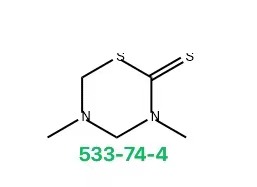
Dazomet CAS:533-74-4
Dazomet CAS:533-74-4
Chemical properties: The pure product is white needle-like crystal, odorless, m.p. 99.5℃ (decomposition) (104~105℃). Vapor pressure 400×10-6Pa. Easily soluble in acetone and chloroform; slightly soluble in ethanol and benzene; chemically insoluble in ether and carbon tetrachloride; solubility in water at 25°C is 0.12%, and solubility in warm water is slightly improved. It is easy to decompose in aqueous solution, and the decomposition is accelerated when the temperature is above 45°C, which affects the effect of the agent; it is easy to decompose when encountering strong acid and strong alkali.
Broad-spectrum pesticide. Nematicides with fumigation effect decompose methyl isothiocyanate, formaldehyde and hydrogen sulfide in the soil, killing root nodule nematodes, stem nematodes and heteroderma nematodes. In addition, it has insecticidal, bactericidal and herbicidal effects, so it can simultaneously control soil fungi, underground pests and Chenopodiacea weeds, such as potato Rhizoctonia, Phytophthora chemicalbook, knock beetles, May beetle larvae, etc. Use 98% microgranular agent 750~900g/100m2 sandy soil and 900~1050g/100m2 clay for soil treatment, broadcast or furrow application to prevent and control vegetable and peanut nematode diseases. Use 75% wettable powder 1125g/100m2 to prevent and control potato root nematode disease. -
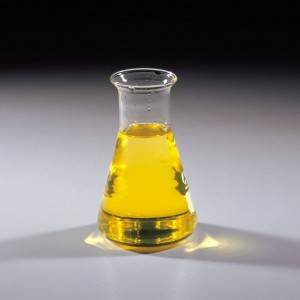
Dimethyl sulfate CAS:77-78-1
Dimethyl sulfate CAS:77-78-1
It is colorless transparent oily liquid. Slightly soluble in water, soluble in ethanol, ether, acetone, etc.
It is widely used in medicine, pesticides and other industrial industries. It is a good methylating agent and is used in the manufacture of dimethyl sulfoxide, caffeine, vanillin, aminopyrine, trimethoprim and the pesticide acephate, etc. In organic synthesis, it is used as methylating agent instead of alkyl halide. -

N-methyl-o-toluidine CAS:611-21-2
N-methyl-o-toluidine CAS:611-21-2
It is a light yellow oily liquid. Melting point 119.5℃, boiling point 209-210℃。Usage: cycloalkylamine, aromatic amine derivatives,, also used in the intermediate synthesis of fuel bodies。
Details:
Melting point -10.08°C (estimate)
Boiling point 207°C
Density 0.97
Refractive index 1.562-1.565
Flash point 79.4°C
Storage conditions Keep in dark cool place
Form: clear liquid





